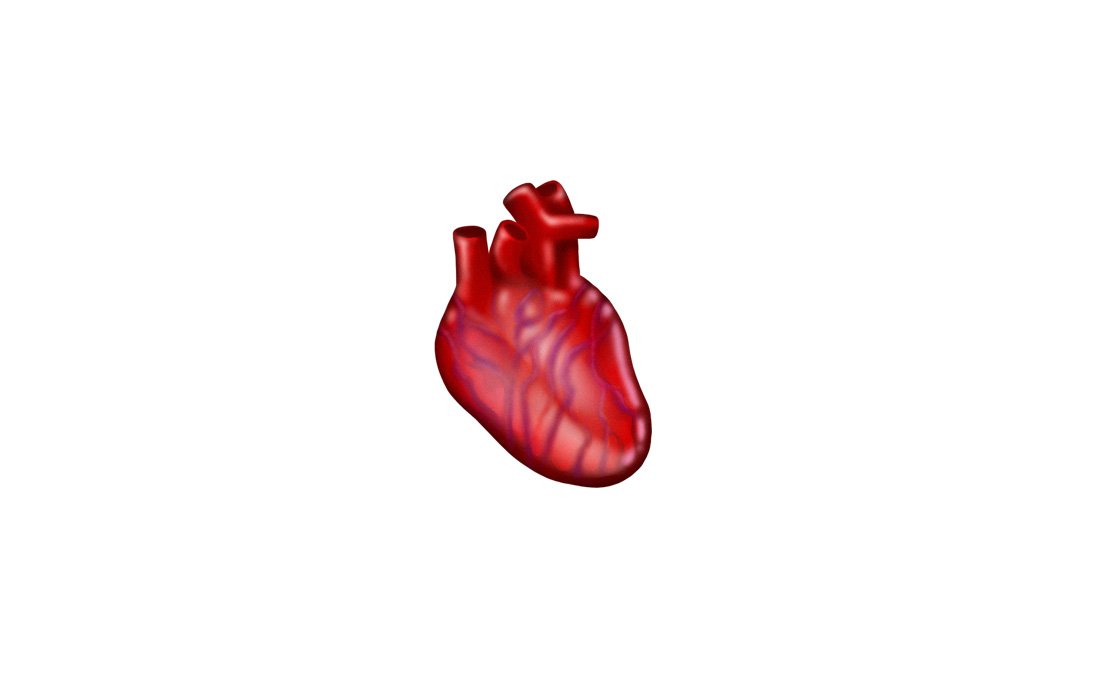
You’ve seen the heart emoji…or have you? Soon you might have an anatomically correct version. But who proposed it and why? We found out, and even talked to the doctor who helped make it happen.
Does your phone have enough heart?
Soon, it might. Or more, anyway: In January, the Unicode Consortium—which is in charge of reviewing emojis, those cute little images on your phone—approved several new proposals. Two new ones really stole our hearts: 1) a heart, and 2) lungs.
A heart? Sure, you’ve seen that. The difference between this one and the lovey-dovey version on your phone: it’s anatomically correct, valves, atria and all. You can see the proposal here, and it is highly entertaining.
But why would we need that?
The proposal’s authors—creative writer Christian Kamkoff, physician Shuhan He, and Melissa Thermidor, social media lead at NHS Blood and Transplant—point out that cardiovascular diseases are the leading cause of death in the world, killing nearly twice as many people each year as all cancers. They believe that the heart emoji “would promote clearer, more accessible communication between healthcare professionals and patients, allowing users to represent the complex cardiovascular system with a single character,” according to the proposal. They give some possible examples of emoji combinations: heartbeat (heart + stethoscope), heartburn (heart + fire), and heart stopping (face screaming in fear + stop sign + heart)—and point out several tweets calling for an anatomical heart emoji.

We spoke to Dr. He, pictured, about his contribution. He became involved with Emojination a year ago after being introduced to it by bestselling author, producer and all-around amazing creator Jennifer 8. Lee. Emojination works to “make emoji approval an inclusive, representative process, and they matched him with the other two contributors, who worked on the proposal remotely. Dr. He is a fellow in emergency medicine in Massachusetts—and that’s just the beginning: He created Doctorlingo.com, a “centralized resource for the thousands of acronyms, jargon, and difficult to understand language of medicine.” He also created a company called Conduct Science in 2013, and he’s currently working on how to take the visual analog pain scale (which uses emojis to help patients describe pain levels), and see what that actually translates to after a scientific investigation.
Dr. He says, “When people come to the hospital, being able to describe their symptoms is very important. Digital health and emergency medicine is the front door of the hospital, and digital health is a way of bringing healthcare to people and making it accessible. Patient-reported outcomes are relatively new. I just want people to feel better—technology can be an amazing thing and we are just at the forefront of this.”
But will folks mistake the anatomical heart for the one we all know and <3? No, say the authors: “As an internal organ, the HEART (ORGAN) lacks the cute appeal of the HEART emoji in the EMOTION category, yet it is universally recognizable due to its essential role in human existence.”
As for the lungs (here’s that proposal), the authors point out that respiratory diseases affect millions of people all over the world, and lung cancer—out of all forms of cancer—kills the greatest number of people each year. So again, an anatomically correct organ may facilitate communication between physicians and patients: “This would encourage increased awareness of risk factors, symptoms, and the impact on the lives of those affected by respiratory health issues through more accessible discussions and expressions of medical topics related to the lungs.”
There’s a wider range of uses, too—the authors point out that the lung emoji could be used to represent a wide array of concepts related to air and breath, such as “at the top of your lungs” or “holding your breath.”
In the proposal, the authors point out that there’s already a brain emoji, which “has already opened the door for anatomical organs.” Overall, they say, “We feel that BRAIN, HEART and LUNG form a basic iconic triumvirate of recognizable body organs.”
Finally, we asked Dr. He how the successful emoji proposal ranks with all of his accomplishments. He created a scientific company, he’s contributed to scholarly works, and he works to literally save lives. But really, we asked, “How cool is this?” Because we find it very cool. He laughed and said, “It’s up there with the greatest thing I’ve ever done…this might actually take the cake. Being able to do things that are interesting in the world—it’s a pure joy.”
Heart illustration credit: Anna Zeng/Emojination


